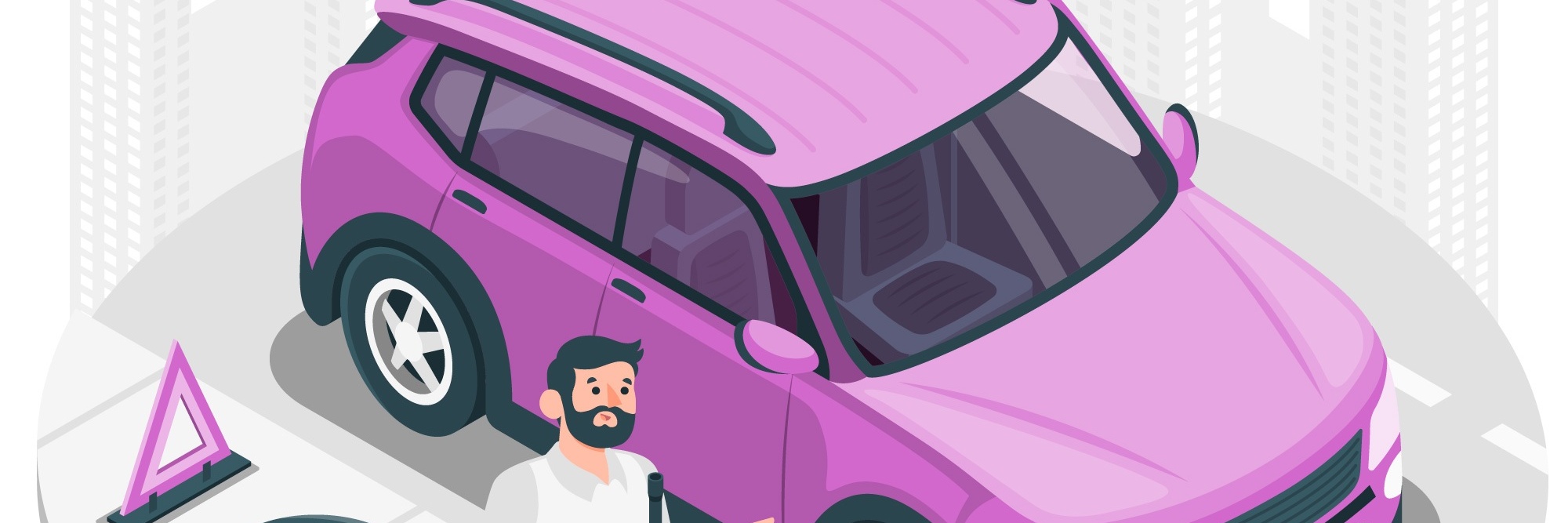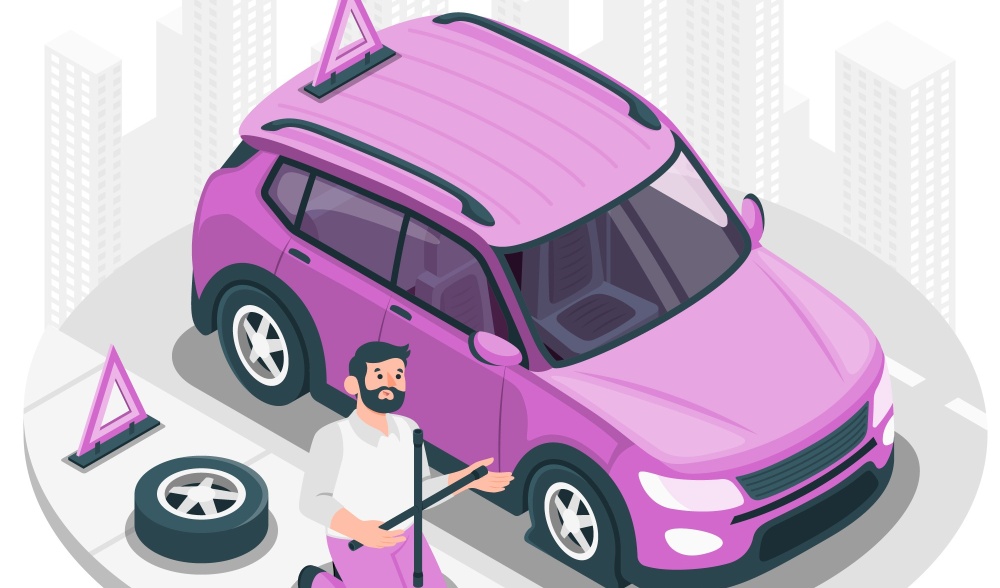

Car Breakdown: How to React When Your Vehicle Stops Unexpectedly
5th January 2024
Sometimes, no matter how much we plan, things can just go wrong. You could be driving down the road and your car could, without any warning, break down.
It is normal to panic, especially if you can’t figure out what caused the breakdown. After all, it can be anything like electrical malfunctions, engine failures, transmission troubles or even tyre problems.
Don’t worry, however. We’ve got your back. Here are some things to do when your car breaks down suddenly.
Find a safe spot.
Find a safe spot.
Depending on where you are when your car starts malfunctioning, here’s a list of things you should do.
If you’re on the motorway
If your car breaks down on the motorway, you should turn on your hazard lights, attempt to move off the road and find a safe spot away from traffic.
Always make sure to steer left. According to the National Highways, you should turn on your left indicator, move to the lane on the left-hand side of the road and then exit at the next junction. If this isn’t possible, you should at least try to move into an emergency area or a hard shoulder.
When a hard shoulder is present:
- Go left: Move your vehicle to the hard shoulder or left-hand verge. When you are on the verge, make sure you are aware of any unseen hazards such as uneven ground or debris.
- Get safe and away from moving traffic: Turn on your hazard lights, exit your vehicle via the left-hand door if safe, and stand behind a safety barrier if available.
When a hard shoulder is absent:
- Go left: In most cases, you can steer your vehicle to an emergency area. These are spaced regularly, are painted orange and are marked with blue signs featuring an orange SOS telephone symbol, to indicate the distance to the next one.
- Smart Motorways: Smart motorways don’t have any hard shoulders. If your car breaks down, you will have to turn on your hazard lights and look for an Emergency Refuge Area (ERA).
Once you’ve made it to an ERA, keep your hazard lights on, exit from your vehicle using the left-hand side and use the SOS telephone to contact National Highways and your car breakdown assistance provider. If you can’t make it to an ERA, steer your car as close to the left-hand side of the road as you can. Then, call assistance immediately. - Get safe and away from moving traffic: Turn on your hazard lights, leave your car via the left-hand door if safe and stand behind a safety barrier if available.
If you’re able to move your car off the road, you can step out and try to see what the problem is. If you’ve got some experience with DIY car repairs, you might be able to fix the problem yourself. In case you’re not sure, however, it’s best to wait for the professionals.
If you aren’t able to move your car at all, stay inside with your seatbelt on, turn on the hazard lights and call 999 for assistance.
Please note, that it isn’t a good idea to use warning triangles when you’re on the motorway. It can be blown into the motorway and be quite hazardous for other drivers.
If you’re on the road
If your car breaks down on an A or B road, you should try to park on a smaller lane. Turn on your hazard lights and make yourself as visible as possible. Ask any passengers to leave the vehicle safely and wait.
You can also use a Warning Triangle on standard or dual carriage roads to indicate to other drivers that they are approaching a stationary vehicle. Place it about 50 metres away from your car. This is particularly useful as hazard lights may not be visible beyond bends in the road.
Call for backup.
You should always keep the National Highways’ emergency contact number — 0300 123 5000 — on your phone. Emergency telephones are located after almost every mile along the motorway's hard shoulders for easy access.
If you have a breakdown cover
If you have a breakdown cover, contact your service provider.
Now, depending on the type of coverage, your options will change.
In case of roadside assistance, the service provider will take your vehicle to the nearest garage. However, if your coverage includes vehicle recovery, you have the flexibility to choose any location in the UK, as long as it's reasonable.
Some policies extend coverage to any vehicle you are travelling in, even if you are a passenger. Similarly, your policy may provide coverage for your vehicle, allowing anyone using it, including passengers, to request assistance when needed.
What you need to tell your breakdown service provider:
- Your name and policy details — You should keep a copy of the policy in your car, or at least on your phone.
- Details of your car breakdown — If you can describe how your car broke down, it will be helpful for the service provider.
- Details about your location — Describe your surroundings and any landmarks near you. Try to be as accurate as possible.
- Any other relevant information — Make sure to provide anything else that may be important. If you don’t feel safe or are in any sort of trouble, tell the service provider.
If you don’t have a breakdown cover
You have two main options.
You can sign on with a service provider on the spot. Most car breakdown assistance providers offer emergency cover. You can call any of the following phone numbers to obtain immediate recovery service.
- Automobile Association: 0800 88 77 66
- Royal Automobile Club: 0330 159 8743
- Green Flag: 0800 400 600
Or you can reach out to a local garage to request a tow for your vehicle. Do remember, however, to ask them for their pricing details, especially how much they charge per mile.
Meanwhile, if you’re in an area where live roadworks are going on, you might be able to get a free recovery service. Please note, however, that free recovery is not the same as a car breakdown assistance service. It simply transports your car to a safe spot away from the roadworks to reduce the risk of accidents.
Stay safe while waiting.
When it comes to what to do if your car breaks down, it is very important to know these safety tips.
If you’re on a crowded road, it’s safest to exit from your vehicle and wait away from the traffic. You should also get any passengers out of the vehicle through the side farthest from traffic and wait behind a safety barrier. Wear a high-visibility jacket so that it is easier for the recovery service to spot you.
Please note that it is safer to leave your pets in the vehicle with the window slightly open. Only remove them in case of an emergency.
If you have a disability, please stay in your vehicle with your seat belt on. Turn on your hazard lights and call 999 immediately. Please make sure to tell the operator if you have a disability or are travelling with anyone who needs urgent help.
You can also text 0738 028 3600 to contact National Highways.
In case you feel threatened by anyone around you, please return to your vehicle using the left-hand door and promptly lock all the doors.
Conclusion
A car breakdown can certainly turn into a stressful situation, especially when it catches you off guard. It's not something we're usually prepared for, and panic can easily set in. However, the first thing on the list of what to do if your car breaks down is to remember that you're not alone in such moments of crisis. Follow these steps to ensure your safety and get back on the road.
